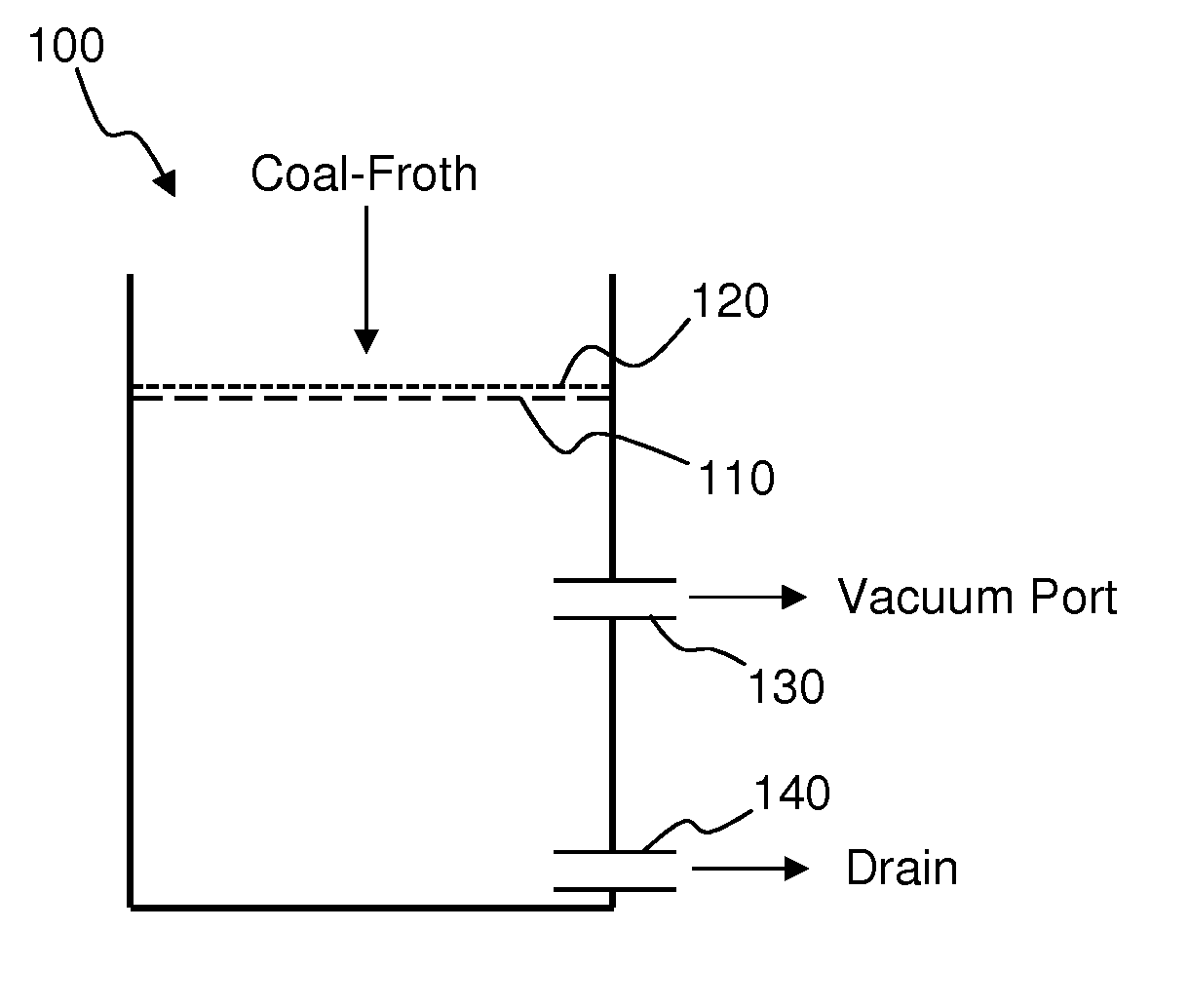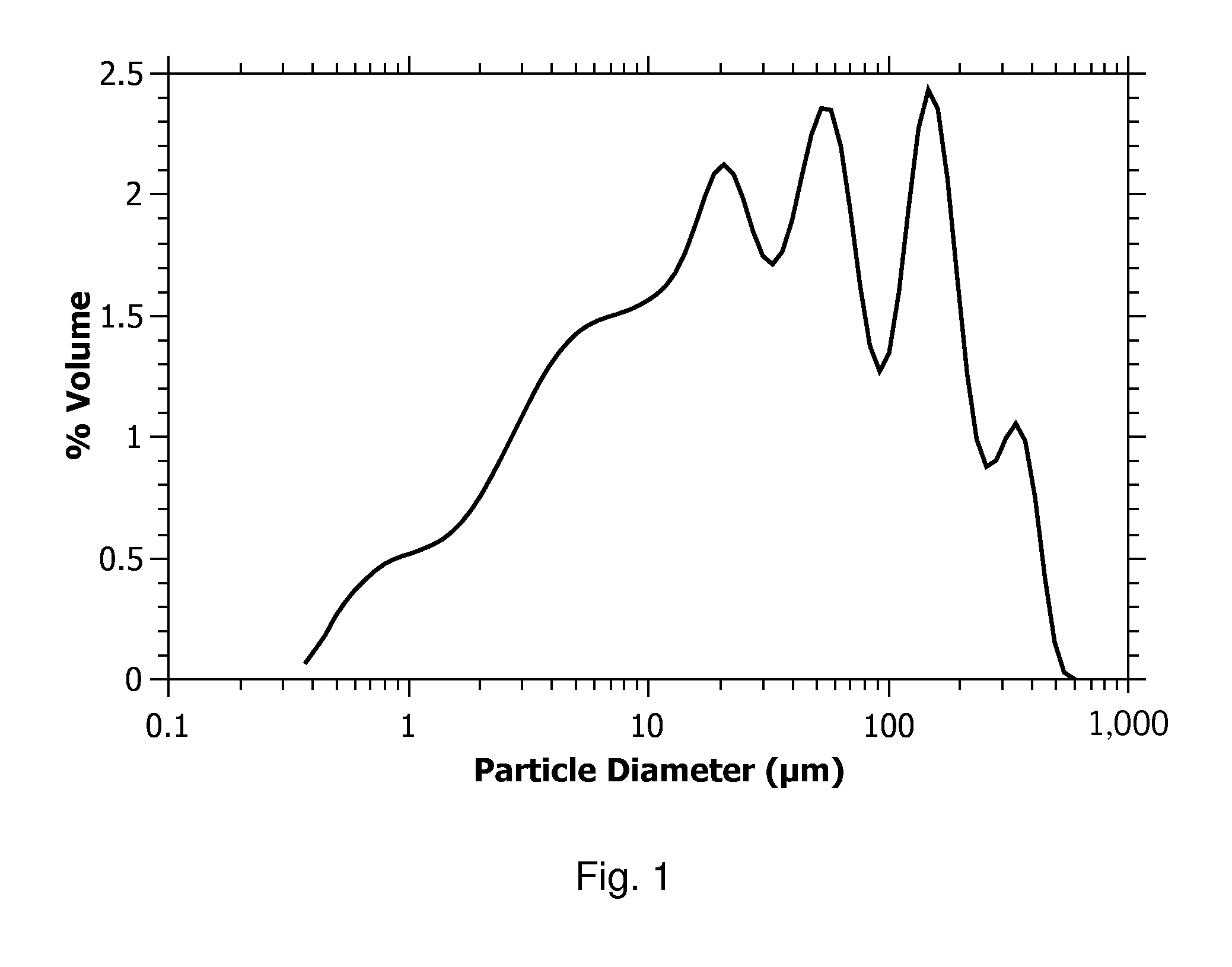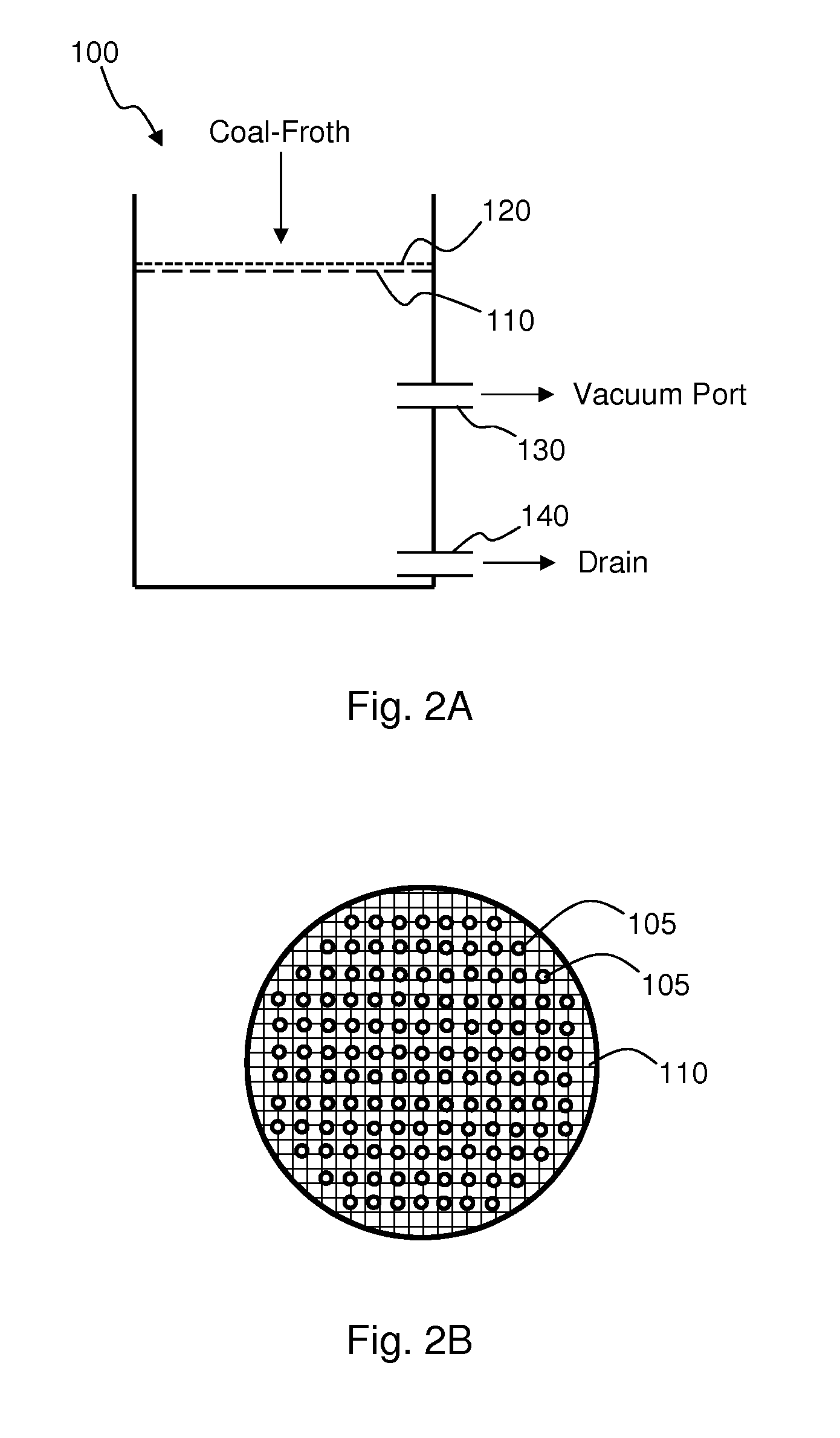Vibration assisted vacuum dewatering of fine coal particles
- Summary
- Abstract
- Description
- Claims
- Application Information
AI Technical Summary
Benefits of technology
Problems solved by technology
Method used
Image
Examples
example 1
General Comparison of Dewatering Processes
[0041]Laboratory tests show that the moisture content of the cake produced by mechanical dewatering techniques is dependent upon the particle size distribution. A gravity dewatering technique and different mechanical dewatering techniques were tested on coal-froth containing 95 wt. % coal particles on a dry basis with the particle size distribution shown in FIG. 1. The different dewatering techniques / equipment included a lab-scale thickener test, a pilot-scale screen-bowl centrifuge, a pilot-scale filter press, a pilot-scale vacuum dewatering drum, a vacuum ceramic disc filter, and a lab-scale tower press. The results are shown in Table 1.
TABLE 1Comparison of Dewatering TechniquesMoisture ContentMoisture content ofDewatering Techniqueof Froth (wt. %)dewatered cake (wt.)Thickener with flocculant75%52%(gravity)Pilot-scale screen-bowl55%31%centrifugePilot-scale filter press55%37%Pilot scale vacuum55%31%dewatering drumCeramic disc filter55%26% t...
example 2
Thixotropic Nature of the Filter Cake
[0046]When handling the cakes produced with the different mechanical dewatering techniques listed in Table 1 at moisture contents between 30 wt. % to 38 wt. %, it was observed that cakes tended to flow more readily when shearing force was added to the cake. Furthermore, when the cake was laid out on a table and patted by hand, moisture would migrate to and pool at the surface of the cake. Vibration was applied to the cake on the table and two things happened: the cake flowed readily to produce a thinner cake on the table and water migrated to the surface of the cake and pooled there. The described observation of shear thinning or becoming less viscous when a shear force or vibration force is applied is characteristic of a thixotropic material.
[0047]An experiment was done to understand two things: (1) the effect of vibration on vacuum dewatering and (2) the influence particle size has on the moisture content of the cake that was produced via vacuu...
example 3
Vibration Assisted Dewatering in a Pilot-Scale Buchner Funnel Vacuum Dewatering System
[0051]A pilot-scale Buchner funnel vacuum dewatering unit was made by modifying a 30 gallon stainless steel drum that is about 18 inches in diameter and 28 inches tall to process larger amounts of coal-froth. A schematic, cross-sectional representation of this pilot-scale Buchner funnel vacuum dewatering unit 100 is shown in FIG. 2A. One-half inch holes 105 were drilled into the lid 110 to support an overlying 55 μm mesh screen 120. FIG. 2B shows a schematic top view of the lid 110 with holes 105. A vacuum pump (Model SW-300-L manufactured by Shinko Seiki) was used to pull vacuum on the drum via a vacuum port 130. A drain 140 is provided to drain the water drawn through the screen 120 and holes 105. When just pumping air, this vacuum pulls more than 40 standard cubic feet per minute (SCFM) air through a 1 inch inside diameter tube. When coal-froth was poured onto the screen 120, a maximum vacuum of...
PUM
 Login to View More
Login to View More Abstract
Description
Claims
Application Information
 Login to View More
Login to View More - R&D
- Intellectual Property
- Life Sciences
- Materials
- Tech Scout
- Unparalleled Data Quality
- Higher Quality Content
- 60% Fewer Hallucinations
Browse by: Latest US Patents, China's latest patents, Technical Efficacy Thesaurus, Application Domain, Technology Topic, Popular Technical Reports.
© 2025 PatSnap. All rights reserved.Legal|Privacy policy|Modern Slavery Act Transparency Statement|Sitemap|About US| Contact US: help@patsnap.com



